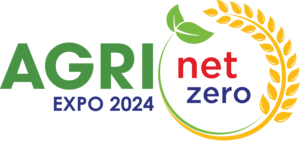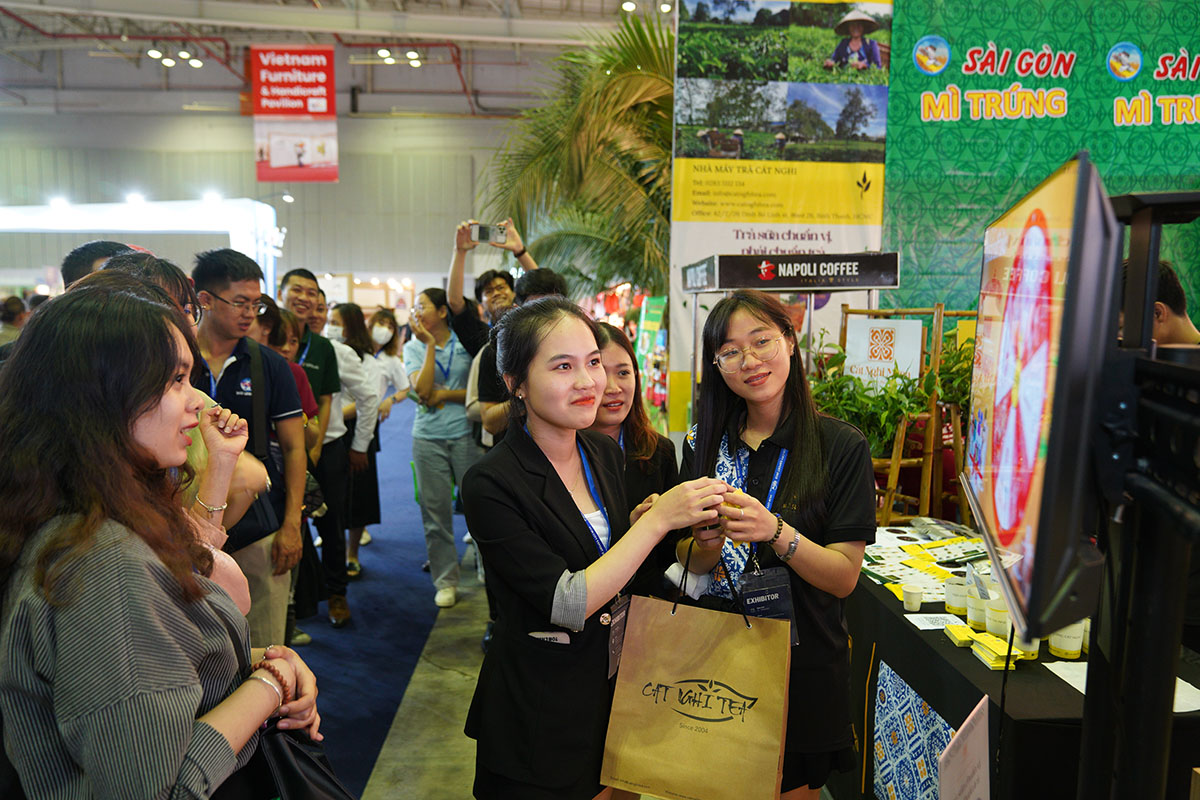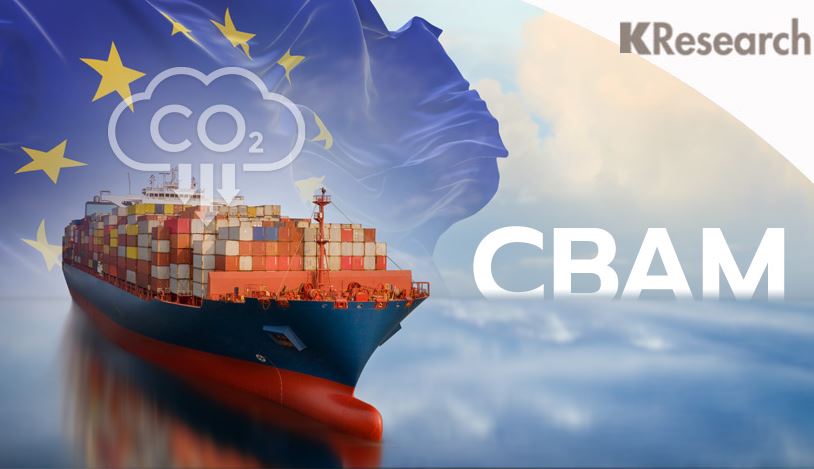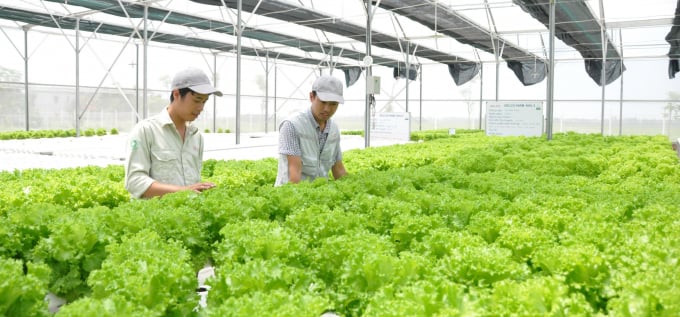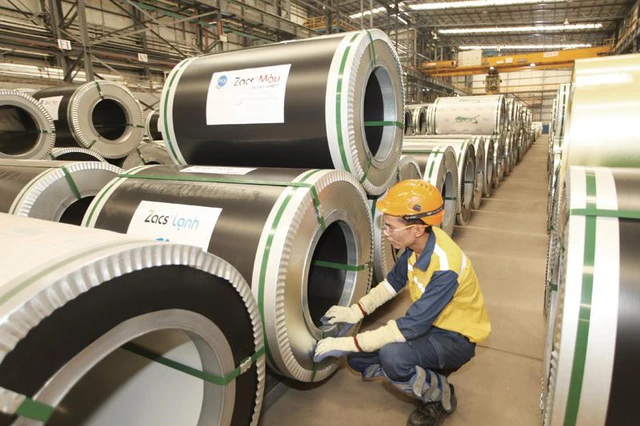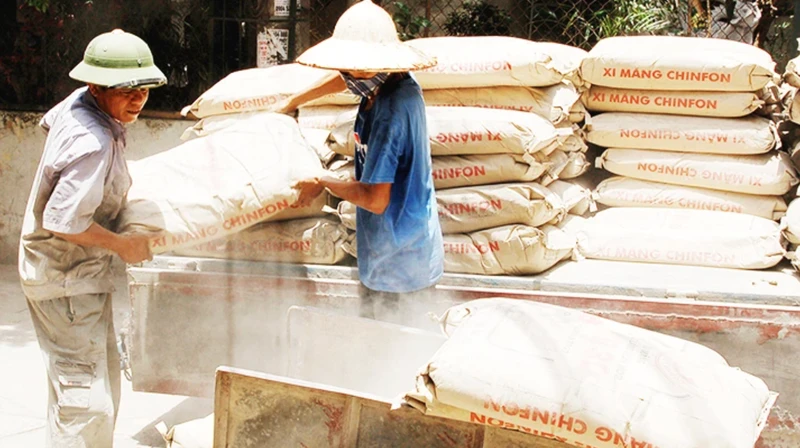Promote economic circulation in agriculture: solutions manual to green growth, sustainable
- Home
- Agricultural circulation
- Promote economic circulation in agriculture: solutions manual to green growth, sustainable
Share
RELATED POSTS
Economic development circulatory now is the general trend to develop green economy and sustainable. Reality in our country today, there have been many economic models circulating in agriculture. It's the pattern: Create and use gas from waste, water waste in livestock and crops; model combines crop, livestock and fisheries; model agriculture – forestry match; pattern garden – forest; cyclic pattern take waste products in agriculture as a catalyst or create products that have value to another; pattern details the culture, associated with the limited use of chemical fertilizer, pesticides, veterinary drugs, growth in crops and livestock.
In it, a number of specific models are deployed and bring efficiency as: model garden – pond – barn; model rice – shrimp, rice – fish. Pattern planting the rice – growing mushrooms – production of compost – grown fruit trees; production model organic fertilizers from agricultural waste; production model synthetic cow – earthworm – grass, corn – livestock and poultry – fish; model aquatic with technology, water circulation,...
In fact, currently, the development of economic circulation are bring a lot of value for agricultural production. Economic development circulatory contribute to help solve the scarcity of resources, protect the environment, respond to climate change and bring high economic efficiency. In Vietnam, the paradigm shift production to economic circulation contribute to the development of the economy, fast and durable. Perform economic development circulation associated with high technology, moving from the real world to the digital world will be big opportunity to enhance efficiency growth compared with the way of growth before.
Share on link pattern chicken – vegetable Thai Binh help you take advantage of scrap livestock products for cultivation, ThS Bui Thi Hong Ha, center of organic Agriculture, University of Agriculture, Vietnam said to towards raising chickens according to the model of organic agriculture, center for organic Agriculture apply the solution as microbial technology I is given in service from the year 2000 to date, additional microbiological according to the husk and microbial technology processing decomposed manure. Agricultural circulation manure, residue field, and waste products, production fertilizers... used for the cultivation of farmers in general. Chicken manure is handled by microbial technology right at the camp, brewed hoai and put in the vegetables.
This approach is applied at the farm the chickens to lay hold of him Hung in the village of Tam Binh Vũ Lăng, tien Hai district, Thai Binh with scale 18,000 to 50,000. The center has adopted unit close to the farmers as farm Association pacific to the introduction and application of microbial technology in this waste livestock.
According to Ha, thanks to the application pattern mixing manure from farm laying hens of you Hung cooperative vegetables clean Central Security has increased productivity by 40%. A cooperative clean vegetables other use of chicken manure sprinkle on the field and take advantage of user remnants on the field, no need to use pesticides, but still help produce vegetables with cheap cost, creating high-quality customer service.
Besides, at TH group – well-known Enterprises in the production of milk has been applied to the production process circulation in the chain of milk production. Specific farm TH applicable model closed circulation, the entire organic material and waste organic products from farm livestock are collected, processed into high quality gaskets, biology serves farm and organic fertilizer. Wastewater breeding is used to improve soil cultivation.
In that cow manure is collected, incubated and processed without chemicals to become sealers bio and organic fertilizers used in barns and scattered out into the field. At the same time, the waste water from the breeding process after processing, is the source of liquid fertilizer with a high content of nutrients is very high. In particular, these nutrients are the organic compounds, natural, easy to decompose and plants to absorb. With the use of this fertilizer, the field of TH minimize the use of chemical fertilizers, inorganic origin can cause the long-term consequences for arable land and environment,...The application of production processes circulatory have contributed to promote the development, production dairy business of the group, at the same time also play an important part in protecting the environment.
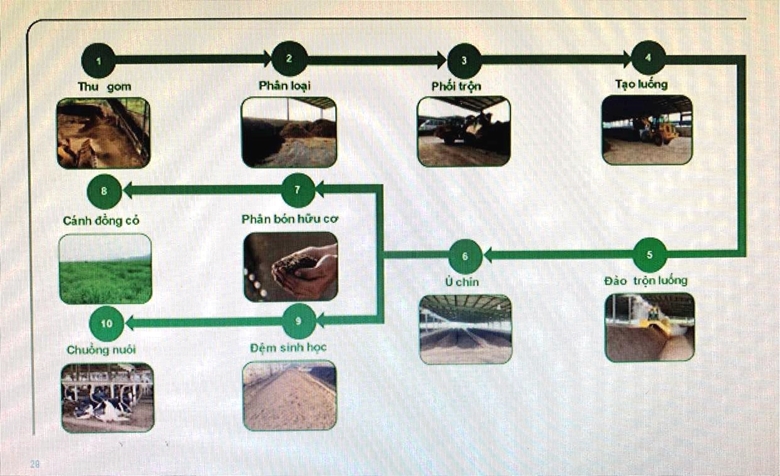
Whether to bring the benefits are not small, however, at present, the deployment of the economic model circulation in agriculture in our country is still at a modest level; the model recycling and artisanal waste products in agriculture has not developed. The cause of the Law, policy framework about pattern development economic circulation has not been completed. The investment for research and development of science and technology for economic development, circulation is still limited. In particular, today, we didn't make the most of the potential from the source material waste by-products in agricultural industry.
According to statistics, the agricultural sector has its waste products extremely large with about 156,8 million tons of the total production of by-products. Which, for the sector of rice, the volume of by-products is estimated 47 million tons of straw, 8.6 million tons of ash, rice husk, 5.6 million tons of bran. For shrimp, the volume of by-products is estimated 314.944 million tons. With fish, the volume of by-products is estimated 994.000 tons. With fruit, the volume of by-products is estimated 4.400.000 tons,...
Meanwhile, from the source of waste products, this can produce, processed into many valuable products such as waste products from wheat can produce bio-fertilizer, feed, the price can grow mushrooms pads, biology, arts and crafts furniture. By-products from shrimp produce the extracts, food, animal feed, oil, shrimp, fertilizer, renewable energy. By-products from fish produce is extracted collagen, enzymes, fertilizer, fish oil, animal feed, renewable energy,...
Despite this, current practice, the rate of collectors by-product of cultivation of new hit 52,2%, the livestock sector reached 75,1%; forestry is 50,2% and seafood is 90%.
In this regard, according to ms. Nguyen Thu Giang – Vice head of the department of Science, technology and environment, Ministry of AGRICULTURE&TPTN, economic circulation in agricultural water we presently undeveloped worthy with the potential of Vietnam. Rate of return, recycling, mature, charge is too low. Meanwhile, agricultural products should be considered renewable resources, are important input of the circulation of another to extend the value-added chain in agriculture. Fact, also a large amount of agricultural products are not be disposed of, discharged into the environment just wasting just pollute the environment.
Besides, capacity application of science and technology in economic circulation is still limited when active research and development this work is limited in the business; the bond between the organization with the university and the business longer loose. The majority of small and medium enterprises is still limited in the technology innovation, the application of high technology, digital technology...
To develop economic circulation in agriculture, according to TS. Tran Cong Thang, head of the Institute of policy and strategy for agricultural development in Vietnam, the Ministry of AGRICULTURE and RURAL development, need to build a legal framework for economic circulation in the agricultural sector. At the same time, construction of mechanisms and policies to encourage economic circulation as: construction of policies to encourage incentives for the economic model circulatory similar to the incentives for agricultural enterprises of hi-tech application. Support start-ups innovation for agricultural economic circulation associated with the Program, startups innovation nation. Pilot investment Funds for business startups innovation in green agricultural development, organic farming, agricultural circulation.
In particular, a solution can not be indifferent, which is to promote the cooperation in research, application and technology transfer to promote economic circulation. Strengthen the cooperation between the institutions of science and technology with business and the producers in the implementation of research tasks application, technology innovation. Strengthening international cooperation in scientific research and application technology transfer, circulation, technology in processing waste products. Đi cùng với đó là đẩy mạnh hợp tác trong nước và quốc tế trong tổ chức đào tạo, tăng cường năng lực cho cán bộ và doanh nghiệp, tổ chức nghiên cứu.
Về vấn đề này, ông Nguyễn Hồng Lam, Chủ tịch HĐQT Công ty Quế Lâm cho rằng, trong sản xuất kinh tế tuần hoàn, nông nghiệp hữu cơ, công tác truyền thông là công tác cực kỳ quan trọng. Do đó, cần đẩy mạnh công tác này, bởi nếu không có truyền thông sẽ không ai hiểu được cách thức, đường đi…của kinh tế tuần hoàn.
Nhiều ý kiến cho rằng, để phát triển kinh tế tuần hoàn trong nông nghiệp, cần xây dựng chương trình và tổ chức các lớp tập huấn nâng cao cho các cán bộ nghiên cứu, các đơn vị sản xuất kinh doanh về các mô hình ứng dụng, chuyển giao công nghệ xử lý chất thải, phế, phụ phẩm trong nông nghiệp. Xây dựng giáo trình về kinh tế tuần hoàn trong vực nông nghiệp và đưa vào các chương trình học tập cho sinh viên.
Đặc biệt là thúc đẩy số hóa và xây dựng hệ thống cơ sở dữ liệu, phân tích dữ liệu về kinh tế tuần hoàn. Trong đó, xây dựng hệ thống cơ sở dữ liệu, phân tích dữ liệu về kinh tế tuần hoàn giúp theo dõi mức độ tuần hoàn của nền kinh tế. Theo dõi, cập nhật hệ thống các công nghệ mới trong nước và thế giới để kịp thời cung cấp cho các tổ chức, cá nhân tham gia triển khai các hoạt động thúc đẩy phát triển kinh tế tuần hoàn,…
Đề án phát triển kinh tế tuần hoàn ở Việt Nam tại Quyết định số 687/QĐ-TTg ngày 7/6/2022 của Thủ tướng Chính phủ đã nêu rõ mục tiêu phát triển kinh tế tuần hoàn nhằm tạo động lực cho đổi mới sáng tạo và cải thiện năng suất lao động, góp phần thúc đẩy tăng trưởng xanh gắn với cơ cấu lại nền kinh tế, đổi mới mô hình tăng trưởng theo hướng tăng cường hiệu quả, tính gắn kết tuần hoàn giữa các doanh nghiệp và ngành kinh tế, nâng cao năng lực cạnh tranh và khả năng chống chịu của doanh nghiệp và chuỗi cung ứng trước các cú sốc từ bên ngoài, nhằm góp phần đạt được thịnh vượng về kinh tế, bền vững về môi trường và công bằng về xã hội; hướng tới nền kinh tế xanh, trung hòa các-bon và đóng góp vào mục tiêu hạn chế sự gia tăng nhiệt độ toàn cầu. Đồng thời, góp phần cụ thể hóa mục tiêu giảm cường độ phát thải khí nhà kính trên GDP ít nhất 15% vào năm 2030 so với năm 2014, hướng tới mục tiêu phát thải ròng về “0” vào năm 2050.
Để hiện thực hóa mục tiêu trên, việc thúc đẩy phát triển kinh tế tuần hoàn trong nông nghiệp là điều cần thiết. Chính vì vậy, chúng ta cần triển khai các giải pháp đồng bộ và thiết thực để đẩy mạnh hơn nữa mô hình kinh tế này. Trong đó, cần tiếp tục nâng cao nhận thức của người sản xuất, doanh nghiệp,…trong phát triển kinh tế tuần hoàn, để từ đó, nhận thấy rõ được những lợi ích mà kinh tế tuần hoàn mang lại về kinh tế, về môi trường. Việc tuyên truyền cần được triển khai thường xuyên và sâu rộng nhằm tiếp tục nâng cao nhận thức của các bên liên quan trong vấn đề này.
Bên cạnh đó, cần tuyên truyền, giới thiệu và nhân rộng các mô hình hay, hiệu quả về kinh tế tuần hoàn trong nông nghiệp. Từ đó, nhân rộng, lan tỏa các mô hình này trong sản xuất. Đồng thời, tạo cơ hội cho việc phát triển thêm các mô hình mới trong phát triển kinh tế tuần hoàn nông nghiệp.
Bên cạnh đó, cần tiếp tục nghiên cứu, phát triển các công nghệ mới áp dụng trong kinh tế tuần hoàn. Vấn đề này cần tiếp tục được Nhà nước và các doanh nghiệp cùng tiếp tục quan tâm, triển khai để giúp biến các phụ phẩm nông nghiệp ngày càng trở nên có giá trị hơn. Cùng với đó, có cơ chế, chính sách để tạo điều kiện cho thúc đẩy kinh tế tuần hoàn trong nông nghiệp….
Việc triển khai các mô hình kinh tế tuần hoàn trong nông nghiệp không phải là điều mới mẻ, tuy nhiên, với những giá trị mang lại cho sản xuất nông nghiệp, môi trường cho thấy phát triển kinh tế tuần hoàn trong nông nghiệp cần được đẩy mạnh hơn nữa, để từ đây, tiếp tục gia tăng chuỗi giá trị cho ngành nông nghiệp, đưa nguồn phụ phẩm nông nghiệp ngày càng trở thành nguồn nguyên liệu có giá trị và đặc biệt là hướng đến mục tiêu phát triển kinh tế xanh và bền vững.
Source: dangcongsan.vn



